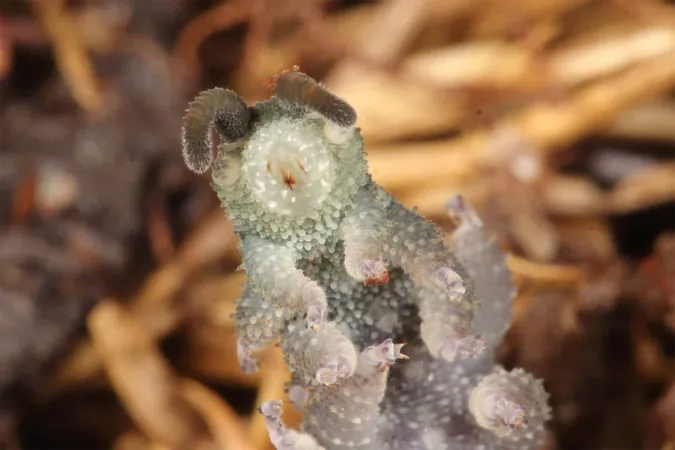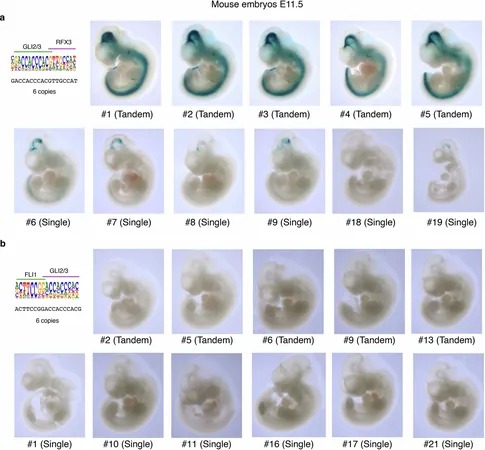
Uncovering 380-Million-Year-Old Innovations in Velvet Worm Slime That Could Revolutionize Bioplastics
2025-04-03
Author: Yu
Imagine a creature that resembles a soft, velvety caterpillar yet is surprisingly ferocious—meet the velvet worm! Unlike its delicately plush appearance, this ancient predator hunts with remarkable efficiency, utilizing sticky slime to capture its prey. A groundbreaking study has unveiled that this slime, derived from a lineage dating back an astonishing 380 million years, may hold the key to developing strong and recyclable bioplastics.
The Marvels of Velvet Worm Slime
What makes velvet worm slime so extraordinary? Researchers have identified unique proteins within it that mimic key functions found in the immune systems of more complex organisms. According to the study, "The structures of proteins are highly conserved evolutionarily in the two distantly related velvet worm subgroups, indicating a pervasive presence of this mechanism across species that has been maintained for ~380 million years."
The slime operates through an unusual transformation. Initially liquid, it ejects from specialized glands through oral papillae and instantly turns into a glassy fiber. "This liquid-to-solid transformation occurs remarkably faster than the silk-spinning of spiders," explains Ali Miserez, a professor at Singapore's Nanyang Technological Institute (NTU).
In an astonishing feature, once solidified, these fibers become as strong as nylon and can revert back to their liquid form when dissolved in water. This property enables them to be recycled, paving the way for a new frontier in the creation of non-toxic, biodegradable bioplastics.
Exploring the Chemistry Behind the Slime
To delve deeper into the unique characteristics of the slime, researchers utilized advanced protein sequencing techniques alongside AlphaFold, an AI tool that accurately predicts molecular structures. They discovered that the slime's properties are driven by leucine-rich repeat (LRR) proteins. Unlike toll-like receptors (TLRs) found in human immune systems that identify pathogens, these LRR proteins serve a different purpose entirely—they function as molecular glue, binding to form strong, yet reversible, fibers.
This discovery hints at the potential for engineering similar proteins to develop bioplastics that can self-assemble and disassemble, similar to the properties observed in velvet worm slime. Such innovations could dramatically alleviate the reliance on traditional petroleum-based plastics, which contribute significantly to the global plastic crisis.
Challenges and Future Perspectives
While the prospects of using velvet worm-inspired materials are exciting, it’s essential to acknowledge some challenges. Although the slime's LRR proteins can be reused by dissolving them in water, this unique property may not be suitable for all types of applications. For instance, a water-soluble bioplastic wouldn’t be practical for items like beverage bottles.
Researchers are optimistic about future advancements. "By fine-tuning the chemistry of this binding mechanism, we can address these limitations," says Matthew Harrington, a chemistry professor at McGill University.
As studies continue, we might be on the brink of a bioplastic revolution that not only addresses our plastic waste crisis but does so in an innovative, eco-friendly manner. The potential of velvet worm slime inspires a vision of a sustainable future where we can redefine the materials we rely upon, one groundbreaking discovery at a time.




 Brasil (PT)
Brasil (PT)
 Canada (EN)
Canada (EN)
 Chile (ES)
Chile (ES)
 Česko (CS)
Česko (CS)
 대한민국 (KO)
대한민국 (KO)
 España (ES)
España (ES)
 France (FR)
France (FR)
 Hong Kong (EN)
Hong Kong (EN)
 Italia (IT)
Italia (IT)
 日本 (JA)
日本 (JA)
 Magyarország (HU)
Magyarország (HU)
 Norge (NO)
Norge (NO)
 Polska (PL)
Polska (PL)
 Schweiz (DE)
Schweiz (DE)
 Singapore (EN)
Singapore (EN)
 Sverige (SV)
Sverige (SV)
 Suomi (FI)
Suomi (FI)
 Türkiye (TR)
Türkiye (TR)
 الإمارات العربية المتحدة (AR)
الإمارات العربية المتحدة (AR)